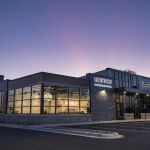What to Do If You Have a Cracked or Chipped Tooth
- 1. Understanding Cracked and Chipped Teeth
- 2. Common Causes of Cracked and Chipped Teeth
- 3. Steps to Take If You Have a Cracked or Chipped Tooth
- 4. When to See the Dentist
- 5. Treatment Options for Cracked or Chipped Teeth
- 6. Preventing Future Damage to Your Teeth
1. Understanding Cracked and Chipped Teeth
Cracked or chipped teeth are common dental issues that can range from minor cosmetic concerns to more serious problems that affect the structure of your teeth. A cracked tooth can occur when there is a fracture in the tooth’s enamel or underlying layers, while a chipped tooth typically involves a small piece of enamel breaking off. While these conditions may not always be immediately painful, they can lead to other dental problems such as tooth decay or infection if left untreated. It's essential to understand the severity of the damage and take appropriate action promptly.
2. Common Causes of Cracked and Chipped Teeth
There are several reasons why a tooth might crack or chip. Some common causes include:
- Trauma or Accidents: A blow to the face or a fall can cause a tooth to chip or crack.
- Chewing Hard Foods: Biting down on hard foods like nuts, ice, or hard candies can cause the enamel to crack.
- Teeth Grinding: Habitual teeth grinding, also known as bruxism, can weaken the tooth structure over time and cause cracks.
- Age: As you age, your teeth naturally become more brittle, increasing the likelihood of cracks and chips.
Understanding the causes behind cracked and chipped teeth can help you take preventive measures and avoid further damage.
3. Steps to Take If You Have a Cracked or Chipped Tooth
If you have cracked or chipped your tooth, it’s important to act quickly to prevent further damage. Here’s what you should do:
- Rinse Your Mouth: Gently rinse your mouth with warm water to clean the area and remove any debris.
- Apply a Cold Compress: If there is swelling, apply a cold compress to your face near the affected area to reduce pain and inflammation.
- Protect the Tooth: If the crack or chip is sharp, try to cover the tooth with a piece of wax or sugar-free gum to prevent it from cutting your mouth.
- Avoid Chewing on the Affected Side: To prevent further damage, avoid chewing on the side with the cracked or chipped tooth until you see a dentist.
Taking these steps will help reduce discomfort and prevent further complications before you can seek professional dental care.
4. When to See the Dentist
It’s essential to visit your dentist as soon as possible after a cracked or chipped tooth. In some cases, the tooth may appear to be fine, but underlying damage could lead to further issues, such as an infection. You should seek dental care immediately if you experience:
- Severe pain or discomfort
- Bleeding from the tooth
- A visible crack that extends deep into the tooth
- Sensitivity to hot or cold temperatures
Even if you don’t experience pain, it’s a good idea to see your dentist for a professional assessment. Early intervention can prevent further complications and help you maintain a healthy smile.
5. Treatment Options for Cracked or Chipped Teeth
Once you see your dentist, they will assess the severity of the damage and recommend the best course of action. Some common treatment options include:
- Bonding: For minor chips, a dental bonding procedure can restore the tooth’s appearance and function by applying a tooth-colored resin to the affected area.
- Dental Crowns: If the tooth is significantly cracked, a dental crown may be necessary to cover the entire tooth and prevent further damage.
- Root Canal: In cases where the crack extends into the pulp of the tooth, a root canal may be required to remove any infection and protect the tooth.
- Veneers: If the chip is on a front tooth, a porcelain veneer can be placed to restore the tooth’s appearance and protect it from further damage.
Your dentist will work with you to choose the most appropriate treatment based on the location and severity of the damage.
6. Preventing Future Damage to Your Teeth
To reduce the risk of cracked or chipped teeth in the future, consider the following preventive measures:
- Wear a Mouthguard: If you play sports or grind your teeth at night, a custom mouthguard can protect your teeth from injury.
- Avoid Hard Foods: Be mindful of chewing on hard foods or objects that could damage your teeth.
- Maintain Good Oral Hygiene: Regular brushing and flossing can help prevent tooth decay, which can weaken your teeth and make them more susceptible to cracks.
- Regular Dental Checkups: Visit your dentist regularly for checkups and cleanings to catch any potential issues before they become serious problems.
By following these simple steps, you can help protect your teeth and reduce the risk of future damage.
Conclusion
If you’ve cracked or chipped a tooth, it’s important to take action quickly and see your dentist to prevent further damage and ensure the best possible outcome. With prompt treatment, you can restore your smile and avoid more serious complications down the line. If you’re looking for expert dental care, visit Dentistry Toothtruth to learn more about our services and how we can help you maintain a healthy, beautiful smile.







 Ideal Smile Dentistry4.0 (135 review)
Ideal Smile Dentistry4.0 (135 review) Waterford Dental Health4.0 (1118 review)
Waterford Dental Health4.0 (1118 review) McCall Family Dentistry5.0 (718 review)
McCall Family Dentistry5.0 (718 review) RiverRock Dental4.0 (157 review)
RiverRock Dental4.0 (157 review) Horton Orthodontics4.0 (426 review)
Horton Orthodontics4.0 (426 review) Plum Grove Family Dental4.0 (87 review)
Plum Grove Family Dental4.0 (87 review) The Importance of Oral Health Education During Pregnancy for a Healthy Pregnancy
The Importance of Oral Health Education During Pregnancy for a Healthy Pregnancy Best Tips for Brushing Your Teeth Properly for Healthy Gums: Essential Techniques for Oral Health
Best Tips for Brushing Your Teeth Properly for Healthy Gums: Essential Techniques for Oral Health Why Skipping Dental Checkups Can Lead to Bigger Oral Health Problems
Why Skipping Dental Checkups Can Lead to Bigger Oral Health Problems Advantages of Porcelain Dental Restorations
Advantages of Porcelain Dental Restorations How Can Diabetes Cause Tooth and Gum Problems? Preventing and Managing Oral Health Issues
How Can Diabetes Cause Tooth and Gum Problems? Preventing and Managing Oral Health Issues Healthy Habits for Promoting Good Oral Health and Hygiene: Tips for a Healthy Smile
Healthy Habits for Promoting Good Oral Health and Hygiene: Tips for a Healthy Smile